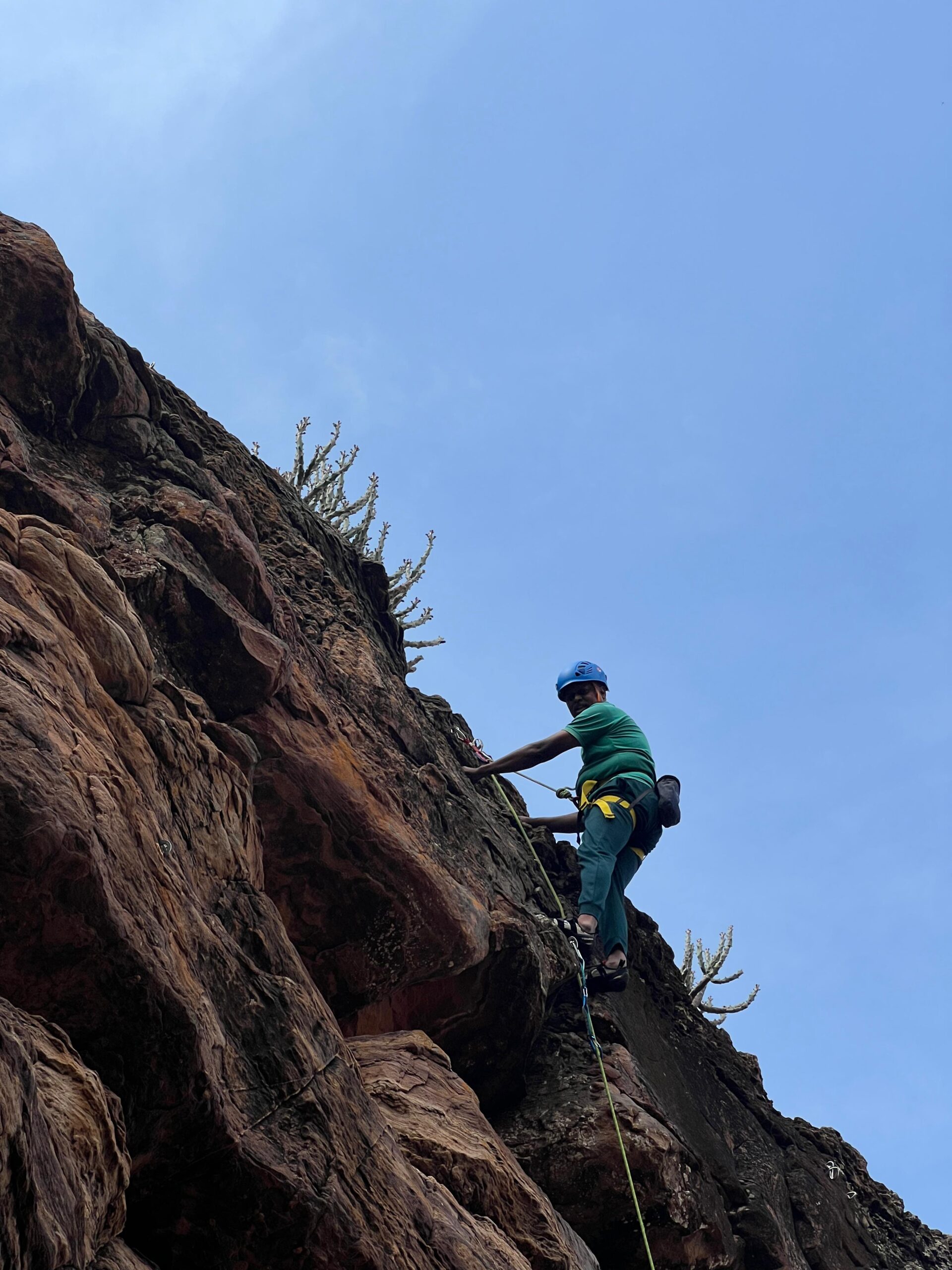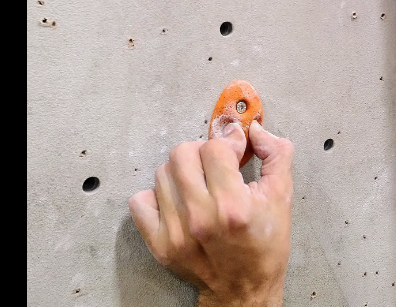30 Essential Climbing Tips for Beginners & How to Improve
Whether you’re just starting your climbing journey or looking to level up your skills, rock climbing offers endless opportunities for personal growth, physical challenge, and mental focus. It’s a sport that pushes you to your limits, and with the right tips and guidance, you can make the most of every climb.
In this comprehensive guide, we’ll share 30 essential climbing tips for beginners, along with strategies to help you improve your technique, safety, and overall climbing experience. From understanding basic climbing techniques to mastering advanced maneuvers, this post will provide valuable insights to guide you along your climbing adventure.
1. Start with the Basics: Understand the Types of Climbing
Before you begin climbing, it’s important to familiarize yourself with the different types of climbing:
- Bouldering: Shorter, more intense climbs without ropes, using crash pads for protection.
- Sport Climbing: Climbing with ropes, where protection points (bolts) are fixed to the rock.
- Traditional Climbing: Climbers place their own protection as they ascend.
- Indoor Climbing: Climbs done in gyms on artificial walls, great for beginners to learn technique.
Understanding the different types will help you choose the right approach to start your climbing journey.
2. Start Slow and Set Realistic Goals in climbing
As a beginner, it’s essential to ease into climbing. Don’t rush into difficult routes. Start with easier climbs, focusing on building your technique and strength. Set realistic goals, like completing a certain number of bouldering problems or ascending a few indoor routes.
3. Invest in Proper Climbing Gear
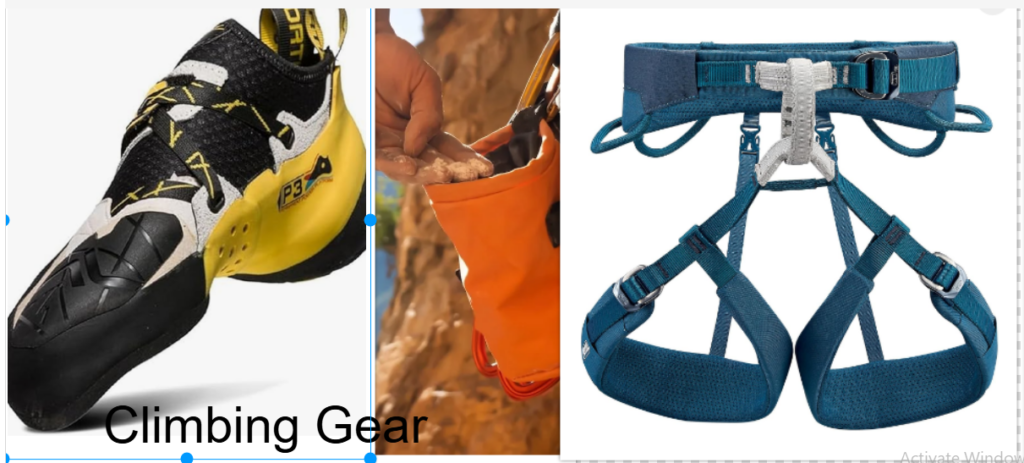
Comfort and safety are paramount in climbing. Invest in high-quality climbing shoes, a harness, chalk bag, and if necessary, a rope and belay device. Your gear should fit snugly, especially your climbing shoes, as they play a significant role in your climbing efficiency.
4. Warm-Up Properly before climbing
Before hitting the wall, take time to warm up your muscles and joints. A proper warm-up reduces the risk of injury and helps improve your performance. Try dynamic stretches, arm circles, and light aerobic exercises to get your body ready for climbing.
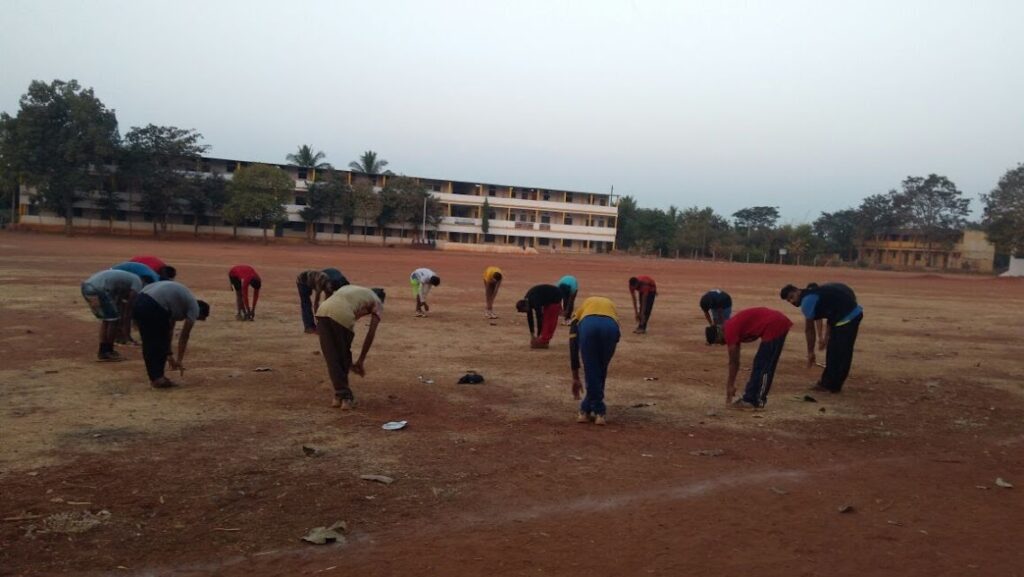
5. Focus on Footwork
One of the most critical aspects of climbing is your footwork. Practice using your feet more than your hands, as your legs are stronger and more efficient for pushing yourself up the wall. Always keep your feet close to the holds, and try to use your toes instead of your heels for better balance.
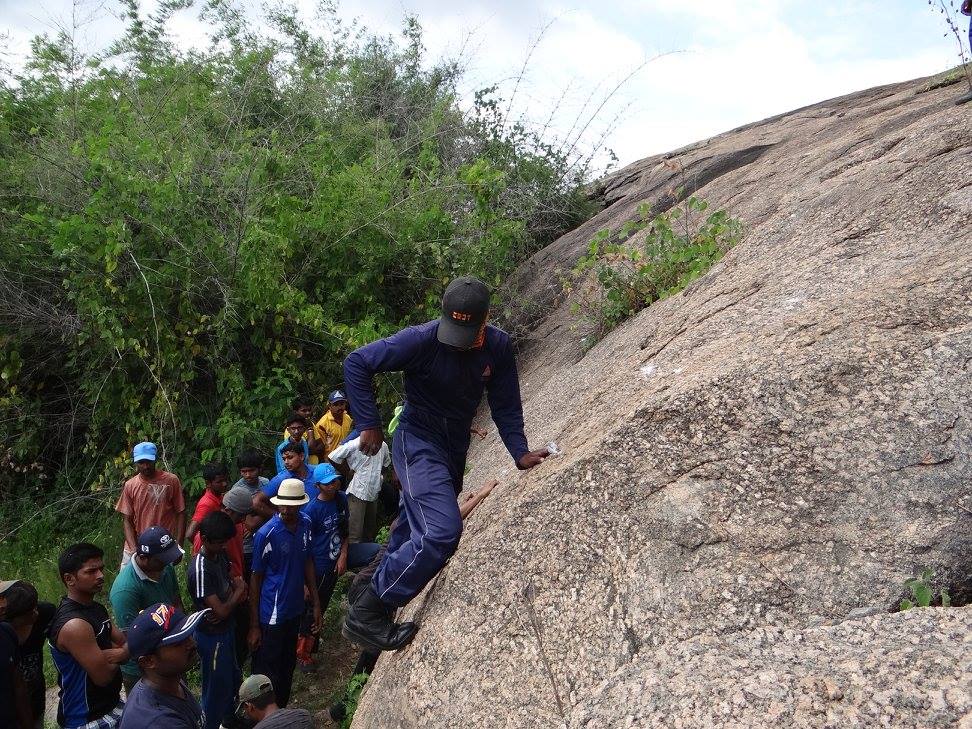
6. Learn to Rest Efficiently
Climbing isn’t just about muscle strength; it’s also about endurance and strategy. Learn to rest your arms during climbs by using good body positioning. Use your legs to hold your weight and relax your arms when you find a good hold or ledge.
7. Perfect Your Grip Technique
There are various ways to grip holds: crimping, pinching, slopers, and open-handed grips. Learn the differences and practice using the correct grip for the type of hold you encounter. Don’t overgrip; relax your hands to avoid premature muscle fatigue.
8. Watch Your Body Position
Good body positioning can make a significant difference in climbing efficiency. Keep your body close to the wall to reduce the strain on your arms. Maintain a balanced center of gravity and avoid leaning too far back or extending your limbs unnecessarily.
9. Trust Your Feet

In the early stages, it’s easy to rely heavily on your hands. But climbing is all about using your legs. Trust your feet to take most of your weight, and don’t be afraid to put more pressure on them as you climb.
10. Take Your Time with Route Reading
Before starting a climb, take a moment to observe the route. Study the holds, visualize your movements, and plan the sequence. This will help you conserve energy and improve your climbing technique as you progress.
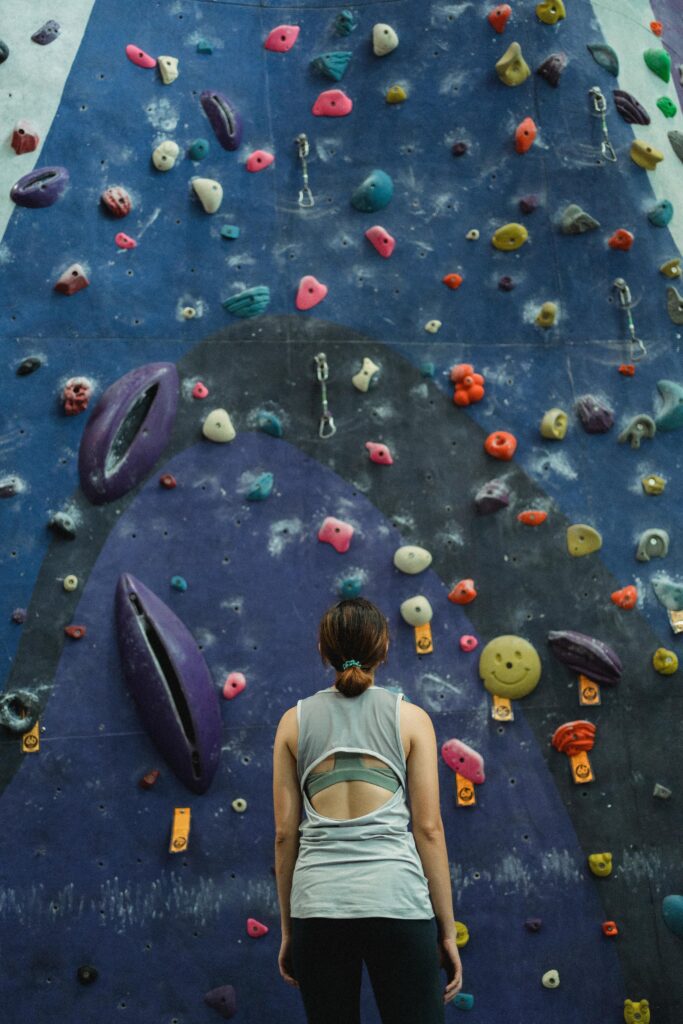
11. Learn to Fall Safely (Bouldering)
When bouldering, falls are inevitable. Learn how to fall correctly by keeping your body loose and rolling to absorb the impact. Avoid falling stiffly, as this can lead to injury.
12. Use Your Core
Engage your core muscles to maintain balance and stability while climbing. A strong core helps control your body movement and reduces unnecessary strain on your arms and legs.
13. Master the Technique of Flagging
Flagging is a technique where you extend one leg out to the side or behind you to maintain balance when there are no footholds directly beneath you. Practice flagging to improve your stability and conserve energy.
14. Stay Calm and Focused
Mental focus is as important as physical strength in climbing. Stay calm and think through each move carefully. Panicking can waste energy and reduce your performance. Focus on your breathing and movements to stay relaxed.
15. Work on Your Flexibility
Being flexible improves your reach, body positioning, and overall climbing performance. Incorporate flexibility training into your routine to increase your ability to stretch and reach for holds comfortably.
16. Practice Down Climbing
Down climbing is an excellent way to practice control and technique while conserving energy. Practice down climbing after completing a route to build muscle memory and improve your confidence.
17. Partner Up with a More Experienced Climber
Climbing with someone more experienced can teach you a lot about technique, safety, and strategy. Don’t hesitate to ask for tips or advice. Watching others climb can inspire you and show you different ways to approach a problem.
18. Learn How to Belay Properly
If you’re doing rope climbing, mastering belaying is essential. A belayer is responsible for controlling the rope and ensuring the climber’s safety. Learn the techniques, pay attention to your partner, and always double-check your gear before belaying.
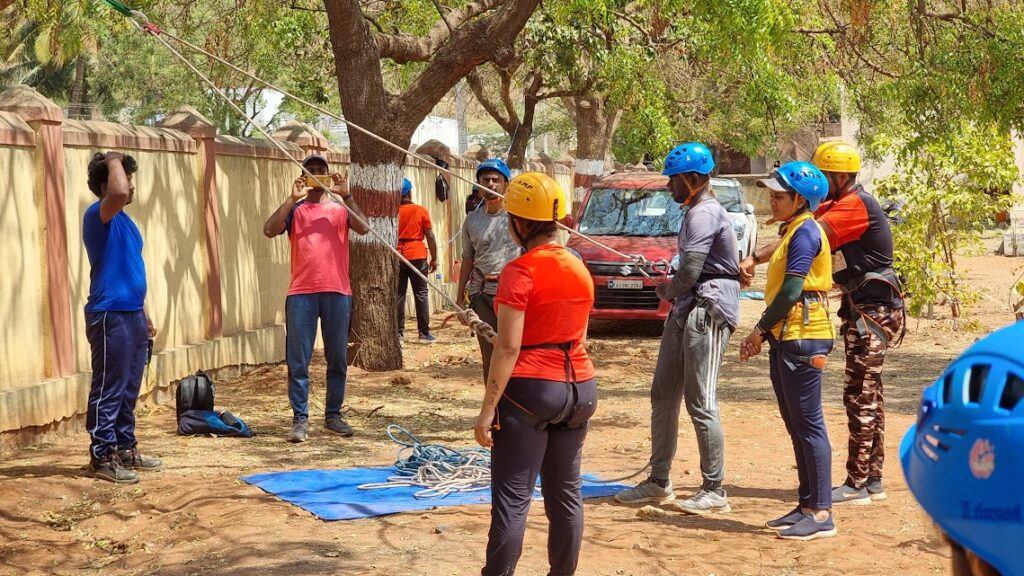
19. Climb Consistently
Like any sport, the key to improvement in climbing is consistent practice. Try to climb regularly to build strength, improve your technique, and gain experience. Don’t get discouraged by setbacks—progress comes with time.
20. Don’t Overdo It
Rest and recovery are crucial for avoiding injuries. While it’s important to practice consistently, avoid overtraining. Give your muscles time to recover and rebuild, especially when you’re just starting out.
21. Climb with Purpose
Set goals for every climbing session, whether it’s to complete a specific route, work on a particular technique, or improve your endurance. Having a purpose for each session will keep you motivated and ensure you’re progressing steadily.
22. Learn to Read the Wall
Become skilled at recognizing holds, patterns, and possible routes on the wall. This ability will help you save energy by choosing the most efficient path and avoiding unnecessary moves.

23. Challenge Yourself with Different Types of Routes
Try a variety of climbing styles to build different skills. Experiment with bouldering, sport climbing, and lead climbing, as each offers unique challenges that will enhance your overall climbing abilities.
24. Track Your Progress
Keep a climbing journal or use an app to track your progress. Record the routes you’ve completed, the grades, and any challenges you faced. Tracking your improvements will motivate you to keep climbing and help you identify areas for growth.
25. Practice Mental Toughness
Climbing often requires overcoming mental barriers. Practice staying calm under pressure, focusing on your goals, and pushing through difficult sections of climbs. Mental toughness is just as important as physical strength in this sport.
26. Seek Feedback and Learn from Mistakes
Climbing is a journey of continuous learning. Don’t be afraid to ask for feedback from experienced climbers or coaches. Analyze your mistakes and work on improving your weaknesses. Every climb is an opportunity to learn something new.
27. Join a Climbing Community
Joining a climbing community can be incredibly motivating. You’ll have access to a wealth of knowledge, encouragement, and camaraderie. Plus, it’s a great way to meet new climbing partners and share your passion for the sport.
28. Climb Outdoors Whenever Possible
Outdoor climbing offers a unique set of challenges and experiences compared to indoor climbing. If you have the opportunity, try outdoor climbing to experience the raw beauty of nature while honing your skills.
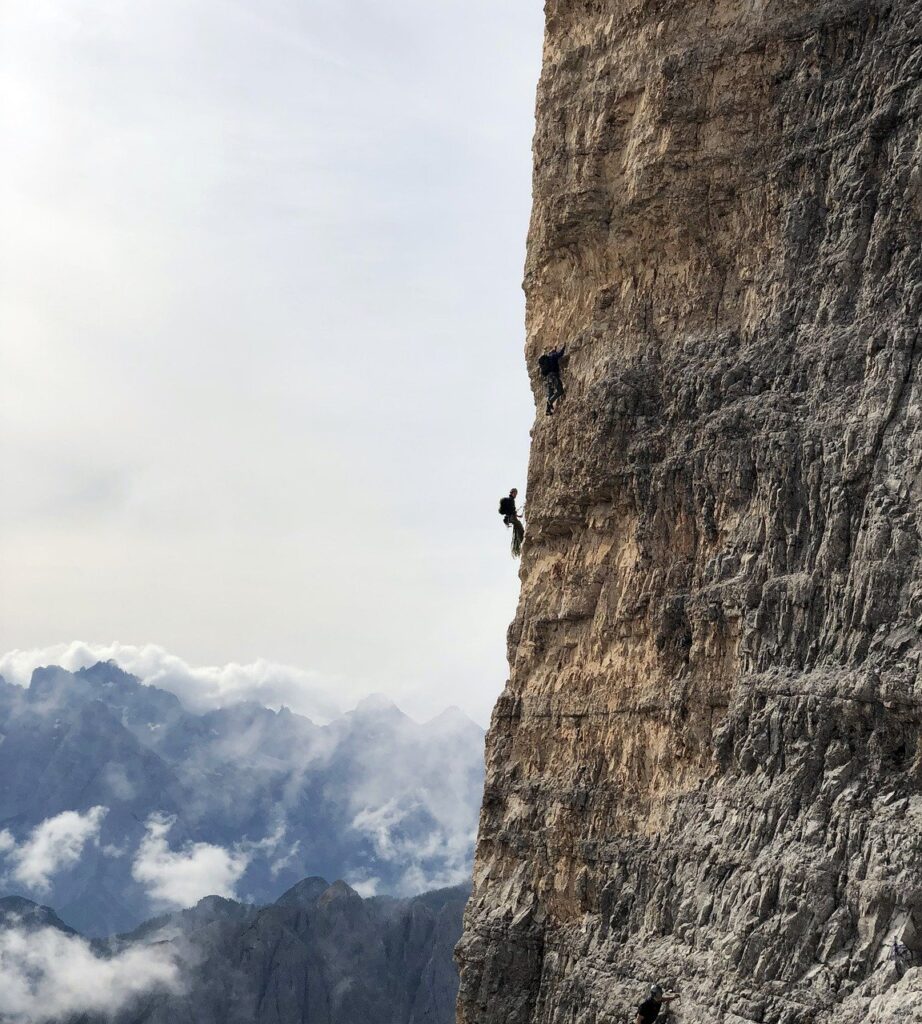
29. Stay Hydrated and Eat Well
Climbing is physically demanding, so it’s important to stay hydrated and eat nutritious meals to fuel your body. Drink plenty of water and consume foods high in protein and healthy carbs to maintain energy levels during climbs.
30. Never Stop Learning
Climbing is an evolving sport with endless opportunities to improve. Continue learning, experimenting with new techniques, and pushing your limits. Every climb is a chance to grow and refine your skills.
Conclusion
Climbing is a challenging yet incredibly rewarding sport that combines physical strength, mental focus, and personal growth. Whether you’re a beginner or looking to improve your skills, these 30 essential tips will guide you on your climbing journey. Keep practicing, stay consistent, and remember that every climb is an opportunity to improve and push your limits.
